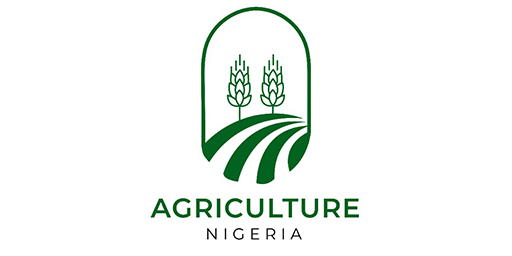Summary
Insect farming is rapidly gaining attention as a sustainable and highly profitable agribusiness. With the rising demand for affordable and protein-rich animal feed, Nigerian farmers can tap into this opportunity by rearing insects such as black soldier flies (BSF), mealworms, and crickets. This guide provides a step-by-step approach to starting an insect farm in Nigeria, including setup, costs, benefits, and marketing strategies.
Did You Know?
- The global insect protein market is projected to reach $1.3 billion by 2027 (Source).
- Insects contain 50-80% protein, making them a superior alternative to conventional animal feed sources (Source).
- Black soldier fly larvae can reduce organic waste by 50-60% while producing high-quality protein (Source).
Introduction: The Future of Sustainable Farming in Nigeria
With the rising cost of soybean, fishmeal, and other protein sources for livestock feed, farmers in Nigeria are struggling to maintain profitability. What if there was a cheaper, sustainable, and nutrient-rich alternative? Insect farming offers a game-changing solution!
By cultivating insects such as black soldier flies (BSF), mealworms, and crickets, farmers can produce high-protein feed for poultry, fish, and livestock at a fraction of the cost. Not only does insect farming reduce feed expenses, but it also promotes environmental sustainability by converting waste into valuable protein sources.
Why Insect Farming is a Game Changer for Nigerian Agriculture
1. High Nutritional Value
- Insects contain 50-80% protein, making them richer in protein than fishmeal and soybean.
- They are packed with essential amino acids, vitamins, and minerals for optimal animal growth.
2. Cost-Effective Alternative to Conventional Feed
- The price of fishmeal has skyrocketed, making insect protein a cheaper and viable alternative.
- Farmers can breed insects locally, cutting down import dependency on expensive protein sources.
3. Sustainable & Environmentally Friendly
- Insects can decompose organic waste, reducing environmental pollution.
- Producing 1kg of insect protein requires significantly less water, land, and feed compared to livestock farming.
4. Fast Reproduction Rate
- Black soldier fly larvae can mature in 14 days, allowing for continuous production.
- Crickets and mealworms are easy to breed and require minimal space.
Step-by-Step Guide to Starting an Insect Farm in Nigeria
Step 1: Choose the Right Insect Species
The most profitable and easy-to-raise insects for animal feed include:
- Black Soldier Fly Larvae (BSFL) – Ideal for poultry and fish feed.
- Mealworms – Great for poultry and pet food.
- Crickets – Rich in protein and widely used in feed formulations.

Image Source: Getty Images
Step 2: Set Up Your Insect Farm
- Housing & Equipment: Use plastic crates, wooden boxes, or specialized insect farming containers.
- Temperature & Humidity: Maintain 25-30°C and moderate humidity for optimal growth.
- Substrate & Feeding: Insects thrive on organic waste, food scraps, and agricultural by-products.
Step 3: Breeding & Production
- Obtain starter colonies from reputable breeders.
- Provide the right environment to encourage breeding and rapid growth.
- Harvest larvae at the right stage to maximize protein content.
Step 4: Processing & Packaging
- Drying & Grinding: Convert larvae into powdered form for easy storage and use in feed formulation.
- Packaging: Use airtight packaging to maintain freshness and prevent contamination.

Image Source: Getty Images
Step 5: Marketing & Sales Strategies
- Target poultry and fish farmers, who need affordable, high-quality feed.
- Partner with feed manufacturers to supply bulk insect protein.
- Sell online through agribusiness platforms and local farm supply stores.
Cost Estimate for Starting an Insect Farm in Nigeria
| Item | Estimated Cost (NGN) |
|---|---|
| Starter insect colony | 10,000 – 50,000 |
| Housing (crates/containers) | 20,000 – 100,000 |
| Feed & substrate | 10,000 – 30,000 |
| Processing equipment | 50,000 – 200,000 |
| Total | 90,000 – 380,000 |
Challenges & Solutions in Insect Farming
1. Market Awareness
Solution: Educate farmers on the benefits of insect protein through workshops and online campaigns.
2. Initial Capital Requirement
Solution: Start small and reinvest profits to expand gradually.
3. Regulatory Challenges
Solution: Stay updated with NAFDAC and agricultural regulations for insect-based feed production.
Final Thoughts: The Future of Insect Farming in Nigeria
Insect farming is a highly profitable, sustainable, and cost-effective solution for addressing the feed crisis in Nigeria. With increasing demand for affordable animal protein, this venture presents an opportunity for smart agripreneurs to thrive.

Image Source: Getty Images
Are you ready to start your own insect farming business? Take the first step today and transform organic waste into gold for the agricultural industry!
OTHER RELATED ARTICLES
- An Introduction to Tilapia Fish Farming
- Yam Production
- Cassava Production – Irresistible Farming guide, Economic potential and 5 trends.
- Cassava Starch Production | Market Demand |10 Essential Processing lines |
- Learn How To Transform Cassava Peels into Animal Feed
- Cassava processing video
- Cashew Production…Fascinating Market Trends
- Land Preparation Activities
- Feeding in aquaculture: 4 Simple but Important things you need to know
- An Introduction to Livestock Production
- How to make Your Own Animal Feeds (For Cattles and Sheep)
- Goat Production
- Turkey Production
- Rabbit Production
- Grasscutter Production
- Shrimp Farming
